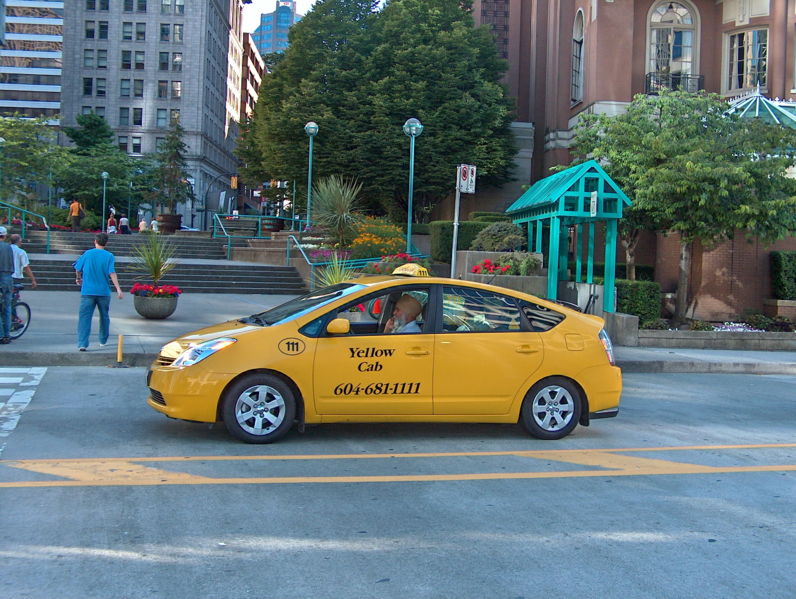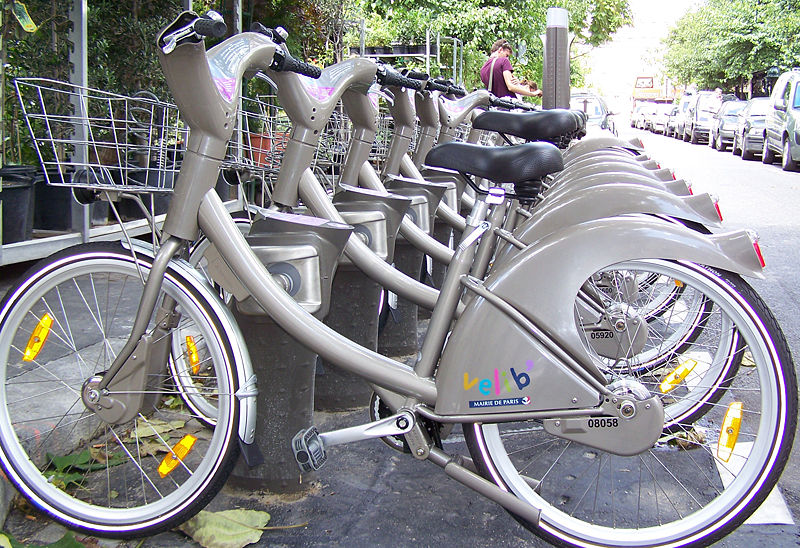When should oil prices go down, ideally?
Monday, June 16, 2008

This is a theoretical question, not based on the premise that they ever will go back down to what they used to be. I'm curious whether there's a body of research on predicting technological change based on need; in this case, the need to save money that is suddenly driving people to change their lifestyle, even in the U.S. and Canada where driving big cars is (used to be?) so popular. For example, the article in the Washington Post a while ago about fuel efficiency, how people with hybrid cars will often compete with each other to see who can get the most miles to the gallon. Or another one about Europe running out of landfill space, which I see as a good thing because Europe is well-equipped to deal with the problem (the article mentions Hamburg and how it has been able to reduce its overall creation of trash through technological development). There was another article on Time.com yesterday or the day before about a service in Washington modeled after Paris' Vélib' service, where people with a credit card are able to pay about $40 a month for the ability to rent bikes in one area, take them to another location and drop them off there without having to worry about keeping track of the bike again, because it's then put back into service and rented by somebody else. Here are some details from the article:
With gas prices skyrocketing and carbon-footprint consciousness going mainstream, more and more cities are betting that Americans are finally ready to make biking part of their daily commute. Denver and Minneapolis will also kick off bike-sharing programs this summer, and Chicago, San Francisco, Portland, Ore., Seattle, and Arlington, Va., are in talks to launch their versions within the next year or so.
Why the renewed interest? One word: Vélib. Paris launched the Vélib program a year ago, and while très cheap (its name is French shorthand for "free bike"), it's actually not free. Although places like Copenhagen, Lyons and Barcelona are big on bike-sharing, the City of Lights boasts the crème de la crème, with 20,600 bikes and about 1,450 stations--four times the number of Parisian metro stops. It's hard to walk more than two blocks without running into a bike rack, which helps explain why the program has already yielded a 5% drop in car traffic. Paris has also removed lots of parking spots to make way for bike stations.
But making things convenient for riders is a major production. Some 400 people work full-time to ensure that the Vélib program runs smoothly. Every day trucks have to move bikes around to meet rush-hour demands, and a barge along the Seine serves as a floating bike-repair shop. "We conceived of this as a public-transportation system, so it operates as one," says Bernard Parisot, president of JCDecaux NA, the outdoor-advertising company that runs Vélib with the profits it makes from selling ads on bus shelters and billboards. To help keep impatience to a minimum, Vélib sends cell-phone alerts about which stations have bikes available. "It's a real revolution," says Parisot. So much so that the mayors of New York City and Chicago have made visits to get a better idea of how a Parisian-style program might work in their cities.
In the beginning, at least, Washington's program will be microscopic compared with Paris'. Officials are starting with 120 bikes and 10 stations to work out any kinks but hope it will grow to many times that. "We need to get bigger if we want to make a dent in congestion and pollution," says Jim Sebastian, planner for the district's department of transportation. And just like Paris, Washington is using bus-shelter ad space to pay for the program. Clear Channel's outdoor-advertising unit paid for the exclusive right to sell shelter ads and is pouring a percentage of that revenue into a scalable system that ties in with city bus and subway routes. Says Martina Schmidt, the company's SmartBike director: "The more drop-off stations, the easier it is to use." And the more people use public transportation, the more eyeballs will be looking at those bus-shelter ads.
one other interesting note in the article:
Shortly after SmartBikes are introduced in the nation's capital, bike-sharing will be showcased at the Republican and Democratic national conventions, which are being held in Minneapolis and Denver, respectively. Each city will have 1,000 communal bikes on hand for its convention, thanks to a corporate sponsor and a cycling-advocacy group.
I think I might see if demconwatchblog.org might be interested in finding out some more information on this.
But Vélib' and hybrid cars I think have been around for long enough that they have started to become a part of the cultural fabric and could resist a theoretical drop in the price of gas. Vélib' is far too convenient and ingrained within the city to go anywhere, and hybrid cars are not just good for reducing gas but also for showing one's fuel efficiency at any one time, and I think drivers of these cars will have gotten used to getting information on their driving habits in real time and wouldn't be happy going back to a simple F - E gauge even if the price of gas were to drop. If the price had dropped some five years ago however, it's doubtful that they would have become popular in the first place.
So the question is: how much adversity is ideal? High gas prices are good for spurring technological development, but companies like airlines are ill-equipped to deal with them. If prices were to suddenly drop down however programs like SmartBike would disappear. A few years later after the program catches on, however, it will probably be able to withstand it. Is there a body of research on just the right amount of adversity to drive technological development, but not so much that it causes catastrophic changes?







0 comments:
Post a Comment